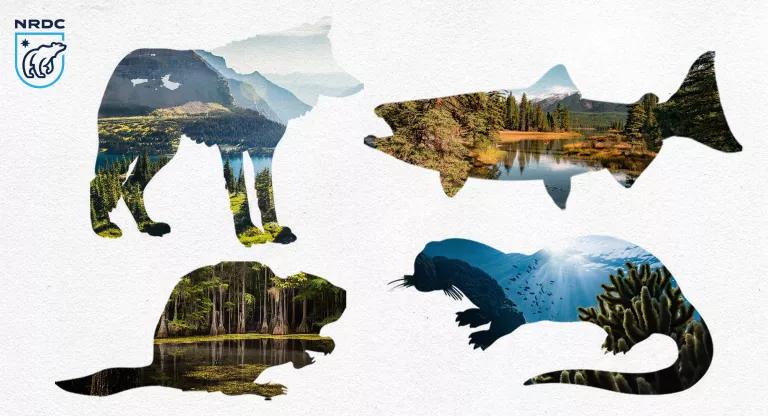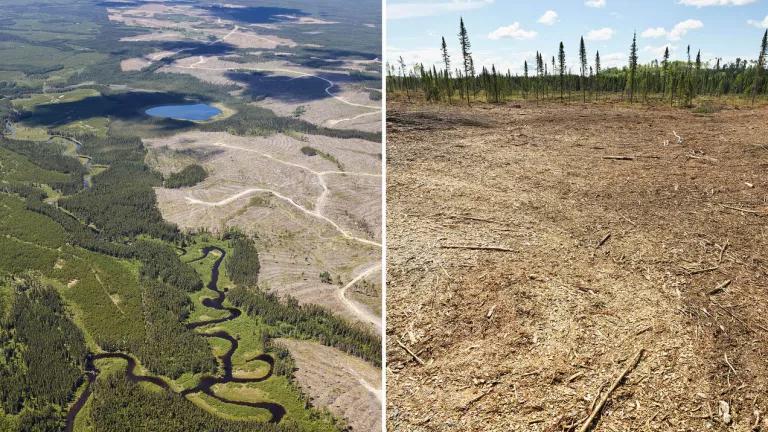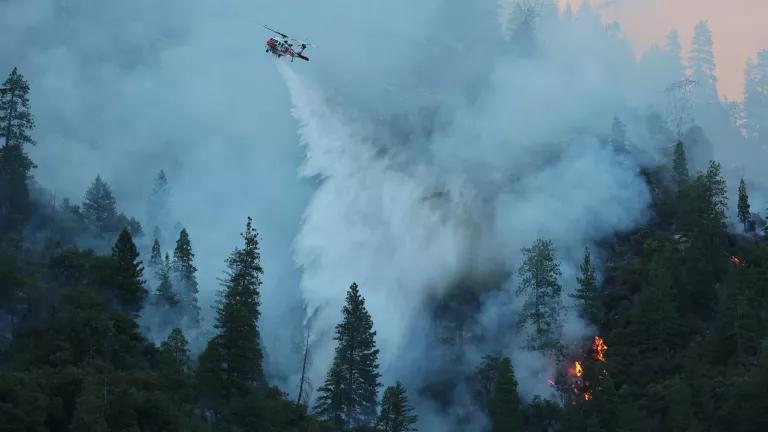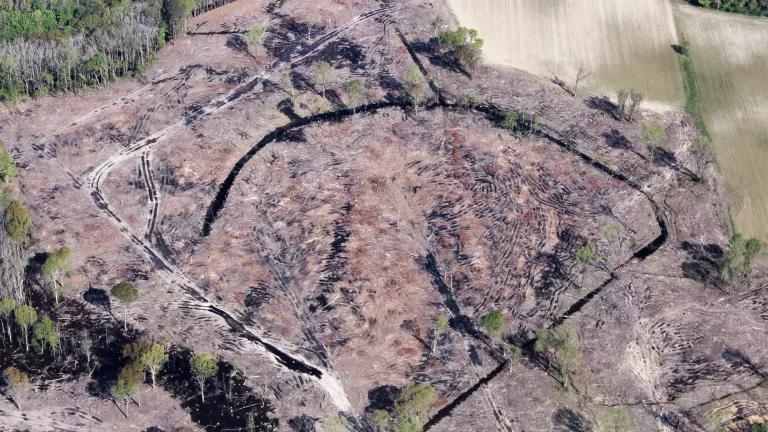Sea Otters Are Climate Warriors
In addition to being one of the cutest animals on the planet, sea otters help maintain healthy, carbon-absorbing kelp forests and seagrass beds.

A mother sea otter with her two newborn pups resting on her belly as they float in the waters of Morro Bay, California
In addition to being one of the cutest animals on the planet, sea otters help maintain healthy, carbon-absorbing kelp forests and seagrass beds.
This blog is the second in a four-part series that explores the role wildlife plays in boosting ecosystem resilience—and how thriving biodiversity supports our own efforts to mitigate climate change. Read our other blogs on wolves, salmon, and beavers by clicking the links.
We need thriving sea otter populations to help fight against the climate crisis. That’s right: Sea otters, particularly because of their love of tasty sea urchins, are critical to ensuring that massive kelp forests flourish and store as much carbon as possible. They also make our climate-critical ecosystems more resilient.
Sea otters’ role in mitigating climate change is a great example of how easily the benefits we derive from healthy ecosystems—like carbon sequestration—can be lost as human activity compels the separate—but equally grave—biodiversity crisis. The otters’ dwindling numbers are propelled by all of the drivers of the biodiversity crisis, including pollution. And their decline is directly hurting our own chances of avoiding the worst effects of climate change.
Before we get into the nitty gritty of the sea otter’s relationship to the climate and biodiversity crises, let’s get one thing out of the way: Yes, sea otters are absolutely adorable, and it’s hard to focus on anything about them other than that. As the IUCN (International Union for Conservation of Nature) Red List of Threatened Species notes, in addition to being the smallest of marine mammals, they are also “quite arguably the cutest.” They often eat floating on their backs, using rocks that they place on their tummies to bash clams or other hard-shelled creatures against to get at the food inside. They float in groups known as “rafts,” which are usually between 10 and 100 individuals, although researchers have seen rafts of more than 1,000 individuals floating together. When resting or feeding, they will often wrap themselves in kelp to keep from floating away with the current and people have frequently spotted sea otters in rafts holding hands with each other to avoid separation. Their babies, called pups, are only 10 inches long at birth and pup fur is so dense that it keeps them safely floating on the surface while their mothers forage for food.
In addition to being one of the cutest animals on the planet, sea otters have an outsize roll to play in the fight against climate change. As a “keystone species,” they have large-scale effects on coastal marine ecosystems, making them critical to the health of the kelp forests they inhabit. This is because sea otters eat animals, like sea urchins, that graze on kelp and the reefs on which the kelp grows. If sea otter populations decline, sea urchin and other prey species populations increase and graze on more of the kelp forests—often to the point of destroying them.
Degraded or destroyed kelp forests and seagrass beds are a significant problem because they are critical to combatting climate change. Researchers estimate that coastal ecosystems, rich with marine plants like mangroves and seagrass, sequester as much as 20 times more carbon per acre than land forests. Kelp forests are similarly critical. Studies support a finding that kelp sequesters around 200 million tons of carbon every year, comparable to the annual emissions of New York State. To keep these climate-critical ecosystems healthy, we need to reduce their threats, which means ensuring that kelp-eating creatures are kept in check by sea otters.

While healthy kelp forests are crucial for combatting climate change, they are also menaced by it. Things like ocean acidification and warming waters threaten the reefs that form the structural base of many kelp forests, like those near Alaska’s Aleutian Islands. To make matters worse, this decline is happening even faster because sea otters have rapidly disappeared from the area, allowing sea urchins to take advantage of weakened reef and forest conditions. Thus, robust sea otter populations support climate resilience in kelp forests and their reef bases.
Unfortunately, sea otters could be a poster child for the biodiversity crisis because they are impacted by all the major drivers of nature’s decline: pollution (the number one threat to sea otters is oil spills), habitat loss, direct exploitation, climate change, and invasive species. The IUCN Red List of Threatened Species has assessed sea otters as endangered, with a decreasing population trend.
As destructive activities like oil and gas exploitation continue, sea otter populations will further decline—and we will lose a natural ally in our fight to combat climate change and build ecosystem resilience. Prioritizing the health of sea otters and their larger habitat is the kind of new relationship we need to form with nature to secure life as we know it. Thus, we must do things like protect more sea otter habitat through initiatives like the Biden administration’s America the Beautiful campaign, which aims to protect at least 30 percent of U.S. land and inland water areas and 30 percent of ocean areas by 2030. Let’s protect sea otter habitat and eliminate other stressors to help out these adorable animals. In doing so, they will pay us back in spades.




